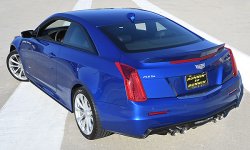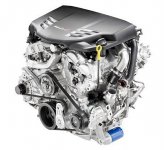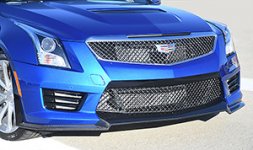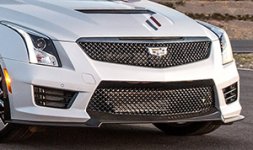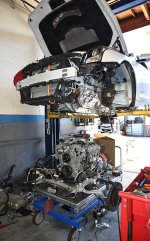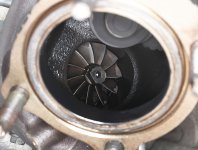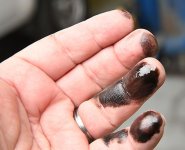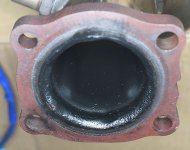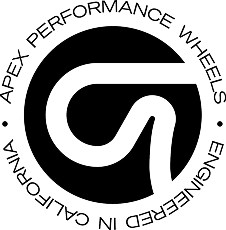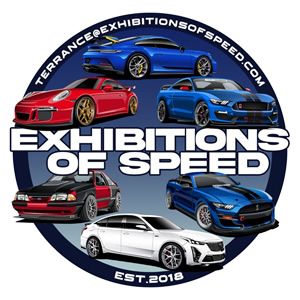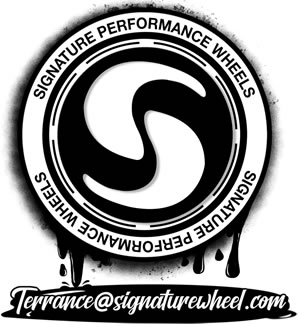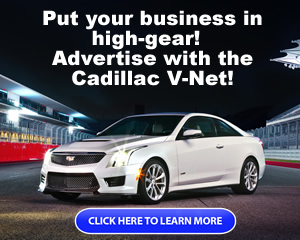Hib Halverson
Technical Writer for Internet & Print Media
- Joined
- Mar 20, 2015
- Messages
- 229
- Location
- CenCoast CA
- V-Series Cadillac(s)?
- 2016 ATS-V Sedan, 2016 ATS-V Coupe
As usual, GM's pace in addressing this nagging customer satisfaction issue is sloth-like.
Back on the 5th, that's what I said about the seemingly never-ending problems we have in getting Cadillac to fix our two problematic ATS-Vs. In using the term "sloth-like", at that point, I was mixing some humor with my lament, but now, three weeks later, both cars are still not repaired. Typically, this is not a problem with our dealer, Bunnin Cadillac, which bent-over backwards trying to help.
 orship: It's a problem farther up the food-chain starting with GM's "Technical Assistance Center" or just "TAC" and going up to the minions who make warranty policy decisions at Cadillac.:frown:
orship: It's a problem farther up the food-chain starting with GM's "Technical Assistance Center" or just "TAC" and going up to the minions who make warranty policy decisions at Cadillac.:frown: With "Pearl" our early 2016 ATS-V Sedan, once it got about 7000 miles on it, my Wife, the Fairest Sandra the Red, and I began to notice that every so often, after a cold start, the exhaust would blow oil smoke for 10-15-seconds. As the miles went by, the problem became chronic–anytime the car sat more than about 8 hours, right after the next start-up, for 10-15-seconds it would belch a cloud of oil smoke. It took months to get General Motors to agree to repair the car under warranty–in spite of our supplying video footage of numerous oil smoking cold starts which clearly demonstrated the problem. GM insisted on an oil consumption test which showed the car's LF4 engine was not consuming an inordinate amount of oil because (well...duh

Eventually, GM had our dealer change the cylinder heads. During the head replacement, Bunnin's lead technician discovered liquid oil on the turbine wheels and in the turbine housings of both turbos. He communicated that to TAC and asked if the turbos should also be replaced. TAC ordered the turbos not be replaced. Sadly, two new heads did not solve the problem. Every time we cold started the car–oil smoke. GM asked for a second oil consumption test. After that, at the 27,190-mile mark, it decided to put two new turbos on the car.
Right away, the oil smoke on cold starts stopped and I was doing a happy-dance:blue: but, unfortunately, only for a short while. We drove the car another 4000 miles or so and then began to see the oil smoke problem, again.
The tech at Bunnin had the exhaust off and could see that, once again, there was oil on the turbine wheels and in the turbine housings. Unfortunately, that was not enough for the folks at the Technical Assistance Center. They told the dealer to replace some parts in the engine's PCV system and monitor the engine's oil use. There was no change in the smoke situation. Then, GM told the dealer to do cold and hot compression tests and forward the results to TAC and, after that, a GM Field Service Engineer (FSE) would visit our dealer to examine the car.
That happened about ten days ago and since then, as of Feb. 4, TAC has not followed up with our dealer. We have the car back and my Wife is driving it but, it's smoking every morning before she goes to work and every evening before she drives home. In fact, we don't dare start the engine with the door open because, if the wind is blowing just the wrong way, the interior ends up full of oil smoke. (cough, cough). We have no idea what GM is going to do nor do we know when.
And then there is our other ATS-V, the late 2016 Coupe, my daily driver. The "Blue BMW Buster" has also had it's share of warranty issues, the most significant of which was, from the time I drove it off the lot with 16 miles on it back on 15JUL2016, in fifth gear at highway speeds, it had a bad vibration that I could feel and hear. It took months to get that repaired. At first, after my repeated visits to Bunnin Cadillac about the issue, GM denied the car had a problem, even going as far as telling Bunnin flatly that it would not approve any warranty work related to my claim that the car had a vibration problem.
I was pissed when I heard that so, I purchased the same "PicoScope" noise and vibration analysis hardware and software dealers have. I learned how to use the equipment, then began logging data and posting the results to this blog. It wasn't too long before GM took notice. At first, because the symptoms seemed to point at propeller shaft with a balance problem, TAC told Bunnin that it would ship out a new prop shaft for them to install in my ATS-V.
A couple weeks later, GM changed it's mind and said the prop shaft shipment had been cancelled and didn't know why the vibration existed. A week or so after that, GM advised Bunnin Cadillac that it was going to take the unusual step of sending a development engineer out to California to work on the car. This person was characterized as the "best driveline noise and vibration engineer" working at General Motors. He was here for almost two weeks and brought with him a crate of expensive equipment with which he instrumented the car and then road tested it for a week.
Then, this engineer had Bunnin's technicians replace the flywheel, clutch, transmission and prop shaft. Viola! The vibration was gone. The bottom line? the transmission was defective and had an unusual internal problem which caused the fifth-gear vibration. I explained the problem in detail in an earlier post to this blog.
If I said that was the limit of the triple-B's problems, but I'd be lying. Since the trans was changed last year, every so often the MIL or "malfunction indicator light" (which many of us know as the "check engine" light) would come on. It would stay on for several cycles then go off. The light usually came on after a 3-4 upshift or 4-3 down shift. I could never get a time when the light was on to get the car into Bunnin to have them verify there was a problem. I knew from scanning the ECM myself that the DTCs setting were P0733 and P0734 which are codes which set then the data being sent to the ECM by the gear shift sensor is not what the ECM is expecting. My understanding is that when these codes set either adjustment or replacement of that sensor is the fix.
Another problem the Blue BMW Buster has is the glove box door won't close properly. If I close the door normally, the right side latch will not engage. To get both door latches to engage I either have t slam the s**t out of the door or close it, then reach way over and push the top right corner of the door forward until it latches. Word from the dealer is there is a "bulletin out on this problem" and that parts have been ordered. When GM will make the parts available is unknown.
Lastly and worstly, my ATS-V Coupe is starting to blow oil smoke after cold starts. Interestingly, the mileage on the car when this began was about the same as that on the Sedan when it began to smoke on a regular basis. Coincidentally, the BMW Buster was at Bunnin Cadillac during the FSE's visit and he witnessed that car's cold start oil smoking. In re: both our smoking ATS-Vs, the FSE told Bunnin's top technician that he would be back-in touch in the future about what actions GM was going to take.
These two ATS-V of ours, which have seldom not had some problem which requires repair under warranty, have become a major annoyance. The whole ATS-V ownership experience has been less then satisfactory because of 1) the number of major warranty problems we have experienced and 2) the decidedly customer unfriendly way in which Cadillac administrates warranty claims made by its customers.
It just fries me to hear about Cadillac President, Johan de Nysschen, telling media, “Our objective of rapidly establishing a second volume hub for the brand to complement our U.S. operations has been attained, as our Chinese business grew exponentially, leaving us well-positioned for sustained growth going forward.”
What Mr. de Nysschen isn't saying is that Cadillac sales in North America have decreased significantly, ie: the 15.5% increase in sales during 2017 was a result of increased sales in China. Maybe if Cadillac had better quality and solved problems resulting in customer warranty claims in a more expeditious manner, the brand would sell better in the U.S. and Canada.
That, also, begs the question: why are Chinese buyers loving Caddys but North American buyers are purchasing Audis, BMWs or Mercedes? Is it because the Chinese are more accepting of cars with made with less quality or are the products Cadillac sells in China manufactured with a higher level of quality and backed by a more customer-friendly warranty administration process than are the Caddys we get here in the U.S.?
I think of all the money that de Nysschen wasted moving Cadillac's headquarters to New York City and opening "Cadillac House" at the corner of Hudson and Charlton in Manhattan then forcing the infamous "Pinnacle Program" on his dealer network.:nono: From my perspective, owing two ATS-Vs which, to date, have demonstrated less-then-satisfactory reliability and durability, watching de Nysschen piss away all that cash is very disheartening. That money should have been spent on enhancing the quality of Cadillac's passenger cars and on improving the experience a customer has when his or her Cadillac needs warranty repairs.
Ironically, an Automotive News' "First Shift" video report this morning, quoted an AlixPartners study which states that the increase in recalls by manufacturers is because, "...some car makers and suppliers are putting bigger focus on innovation and cost reduction than vehicle quality." That sounds like Cadillac to me.
Last edited:

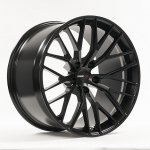
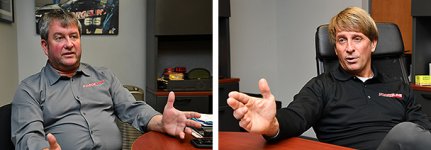
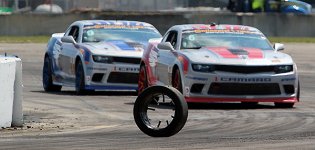
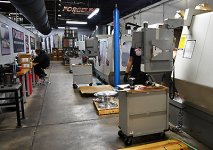
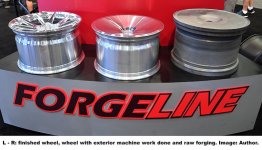
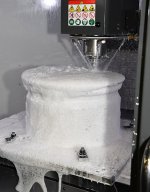
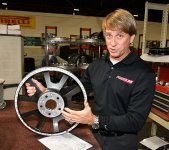
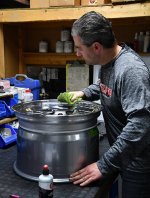
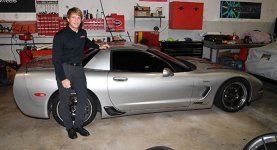
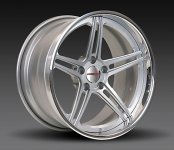
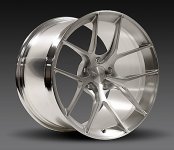
 ocker:
ocker: 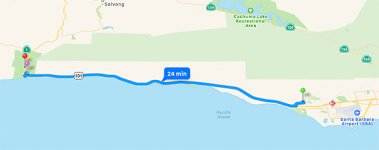
 rnout:
rnout: